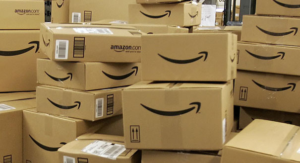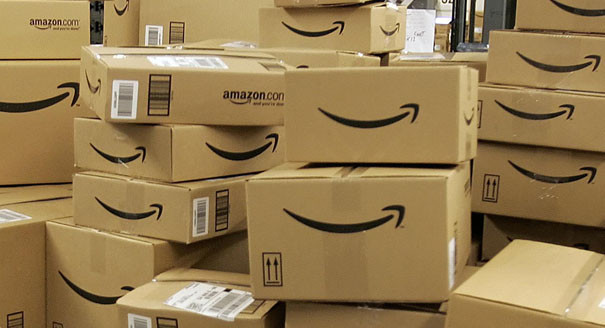The much-feared UPS strike has been successfully averted, thanks to UPS and the Teamsters’ union reaching a new five-year contract.
On July 25, both parties announced the achievement of a tentative agreement, putting an end to the looming strike.
In a press release on July 25, Teamsters’ General President Sean O’Brien expressed satisfaction with the negotiations, stating that UPS had offered an impressive $30 billion in new funds. This financial commitment paved the way for an agreement that ensures robust wages and rewards for the hard work of UPS members, without requiring any concessions.

According to O’Brien, this contract sets a new standard for labor movements and raises the bar for workers everywhere.
UPS CEO Carol Tomé also voiced her approval of the deal, calling it a “win-win-win” situation in a press release. The agreement allows UPS to maintain its industry-leading pay and benefits for both full-time and part-time employees while retaining the flexibility necessary to stay competitive, serve customers effectively, and keep the business strong.
What were the gains achieved by workers in the latest UPS contract?
Table of Contents
The new contract comes with several noteworthy benefits for UPS Teamster workers. Wage increases have been secured for both new and existing full- and part-time employees. Additionally, the agreement creates 7,500 new full-time jobs and facilitates the hiring of 22,500 individuals for existing open positions. Safety and health protections are also included, such as providing vehicle air conditioning and cargo ventilation. Moreover, UPS Teamsters will now have a full holiday on Martin Luther King Jr. Day, and they will no longer be subjected to forced overtime on their days off. Seasonal work will be limited to just five weeks, spanning from November to December.
The wage increases for full-time workers will ensure that UPS Teamsters remain the highest-paid delivery drivers in the nation, with an average top rate of $49 per hour. However, the ratification of the agreement hinges on the UPS rank-and-file member voting, which is scheduled to take place between August 3 and August 22.
What led to the proximity of UPS workers to going on strike?
The negotiations leading up to this agreement were far from smooth, with tensions rising throughout July. A potential strike was anticipated for August 1, which could have been one of the largest in U.S. history and wreaked havoc on the country’s delivery system. Approximately 340,000 UPS workers demanded higher pay, the end of a two-tier wage system, and more full-time jobs. Improved safety and health-related working conditions, as well as stronger protection against managerial harassment, were also part of their demands.
Notably, this isn’t the first time UPS Teamsters have advocated for better contracts and working conditions. In 1997, around 185,000 UPS workers went on strike for 15 days, leading to increased starting pay, more benefits, and the addition of thousands of full-time positions.
Given UPS’s substantial market share, being second only to USPS, the potential strike could have had severe ramifications. With e-commerce having boomed over the past 25 years, the volume of packages handled by UPS has more than doubled, making the impact of any disruption even greater.
However, consumers can now breathe a sigh of relief, as the strike has been averted, and they should not expect any significant delays to their packages. UPS, USPS, FedEx, and other carriers are all available for use. It’s worth noting that Amazon has been reducing its reliance on UPS in favor of its own delivery service, Amazon Logistics, and its own drivers. Nonetheless, Amazon still partners with UPS and other delivery services, and there have been strikes by drivers represented by the Teamsters union at some of Amazon’s delivery service partners.
In summary, the successful negotiation of the new contract between UPS and the Teamsters’ union ensures continued smooth operations for UPS and timely deliveries for consumers and businesses alike.
Frequently Asked Questions (FAQ) – UPS and Teamsters’ New 5-Year Contract
What is the latest update on UPS and the Teamsters’ contract negotiations?
The latest update is that UPS and the Teamsters union have reached a new 5-year contract, successfully averting a potential strike. The agreement was announced on July 25, and it comes with several benefits for UPS workers.
What were the key issues that led to the possibility of a UPS worker strike?
The key issues that led to the potential strike included demands for higher pay, the elimination of a two-tier wage system, and the creation of more full-time jobs. UPS Teamsters also sought improved safety and health-related working conditions, as well as stronger protection against managerial harassment.
What changes can UPS workers expect with the new contract?
With the new contract, UPS workers can expect wage increases for both new and existing full- and part-time employees. The agreement also includes the creation of 7,500 new full-time jobs and the hiring of 22,500 individuals for existing open positions. Additionally, UPS Teamsters will now have a full holiday on Martin Luther King Jr. Day, and forced overtime on their days off will no longer be required.
Will UPS Teamsters still be the highest-paid delivery drivers in the nation?
Yes, the new contract’s wage increases will maintain UPS Teamsters as the highest-paid delivery drivers in the nation, with an average top rate of $49 per hour.
When will the new contract take effect?
The new contract is contingent on the UPS rank-and-file member voting. The voting process will take place between August 3 and August 22.
What would have happened if the strike had not been averted?
If the strike had not been averted, it could have had significant implications for businesses and the economy. The movement of goods would have been slowed, leading to package delays, potentially higher shipping costs, and even higher prices for goods. Small businesses relying on UPS services might have been particularly impacted.
How would the strike have affected consumers?
Consumers could have experienced delays in receiving their packages, especially if UPS is their preferred carrier. However, with the strike being averted, consumers should not expect any out-of-the-ordinary package delays.
Is Amazon still using UPS for its deliveries?
Amazon has been reducing its reliance on UPS in favor of its own delivery service, Amazon Logistics, and its own drivers. However, Amazon still partners with UPS and other delivery services. Recently, there have been strikes by drivers represented by the Teamsters union at some of Amazon’s delivery service partners.
How significant is UPS’s market share in the shipping industry?
UPS holds about 24% of the shipping market, making it second only to USPS in terms of market share.
How has e-commerce growth affected UPS’s package volume?
Over the past 25 years, e-commerce growth has led to a significant increase in UPS’s package volume. In 1996, UPS handled 3.1 billion packages worldwide for the year. In 2022, that number skyrocketed to more than 6.2 billion packages, averaging 24 million packages per day.
Can businesses and consumers now ship packages without concerns?
Yes, businesses and consumers can now ship packages with confidence. The successful negotiation of the new contract ensures smooth operations for UPS and timely deliveries without any anticipated delays.
What happens if the UPS rank-and-file members do not ratify the new contract?
If the UPS rank-and-file members do not ratify the new contract through their voting process, further negotiations or potential actions might be necessary to reach an agreement between UPS and the Teamsters’ union.
Also Read : What Is a Union

